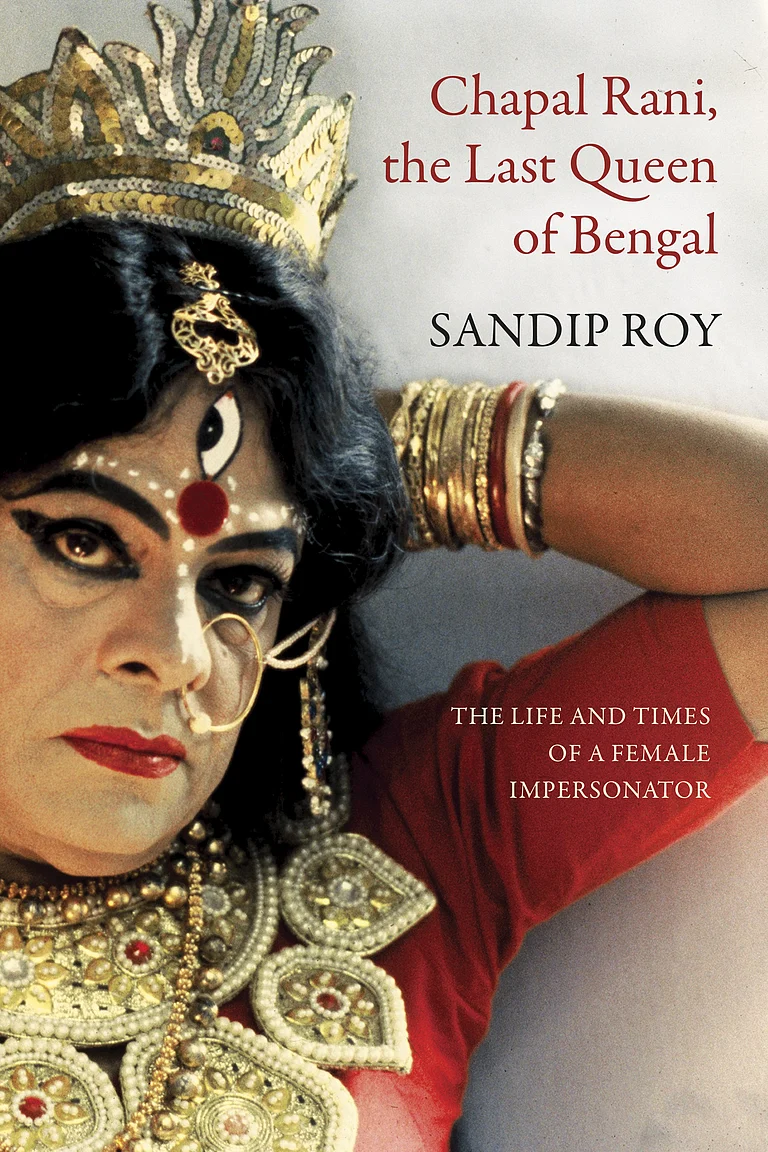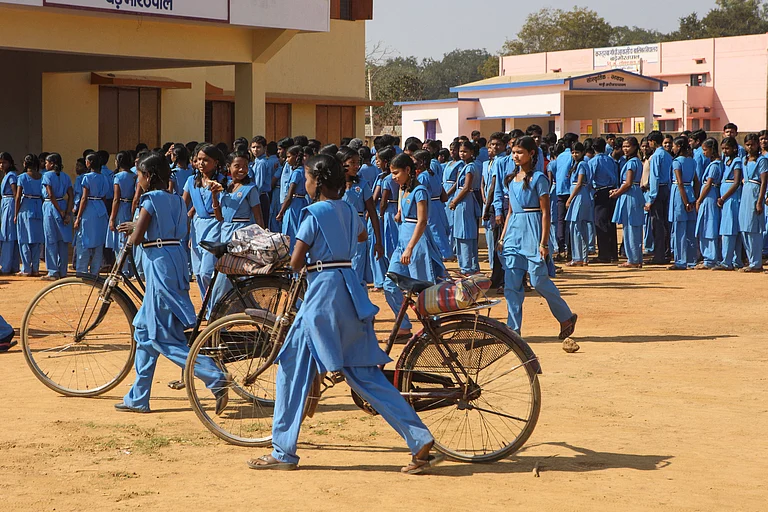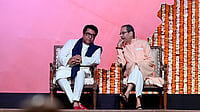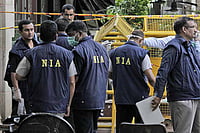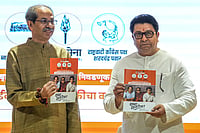IF you’ve been listening to the conflicting noises about the economy in industry and government over the past one month, you would probably feel that it’s either in great shape or in extreme danger. You would, unfortunately, be wrong on both counts.
True, after the record 12 per cent industrial growth and 6.7 per cent gross domestic product (GDP) growth last year, the economy has lost a good deal of its shape this year. Industrial growth has waned, infrastructure is blinking dangerously, and prices are inching up steadily. Capital markets are sluggish, trade’s erratic, demand for a whole lot of goods, from consumer durables to steel, has fallen, and corporates are worried about the health of their books. On the other hand, this alone should not send you rushing to hit the panic button. Six months are left in the year, an efficient busy season credit policy relaxed the noose on funds last fortnight, interest rates are moving southward, and farm output shows all the symptoms of buoyancy.
Sectoral slowdown: It’s not merely a question of whether the economy’s cup of woes is half-full or half-empty; most experts feel that the worry over reduced growth is akin to seeing today’s sun through tomorrow’s clouds. Even the developed West has learned to live with high-insecurity, high-risk growth (see box). Says Raja J. Chelliah, Chairman of the National Institute of Public Finance and Policy: "Even if GDP growth slows down to 6 per cent or even 5.5 per cent from the past levels of 6.5 to 7 per cent, it will still be pretty comfortable. Such growth is sustainable over the medium term, provided there’s no political uncertainty." Agrees B. Bhattacharya, dean at the Indian Institute of Foreign Trade: "Expectations of 20 to 25 per cent export growth are unrealistic in the context of the current macro-economic balances."
The only place where rational expectations don’t work, however, appear to be the Finance Ministry and the Reserve Bank of India (RBI), which are still banking on 6.5 per cent growth. Chief Economic Adviser Shankar Acharya criticised the Cassandras for crying slowdown, on the basis of good data received so far. But, some vital sectors have indeed shown very slow progress. Primarily, trade and industry, which have the potential to throw the balance of payments (BOP) and the revenue deficit out of gear. The World Bank has already nudged the Government towards tightening the fis-cal balance (see box: Wolfensohn’s Remedy).
Infrastructure bottlenecks and costly credit have made the trade outlook especially bleak. Export growth in the first five months of ’96-97 was only half of last year’s corresponding figure. Imports dipped seven times. Meanwhile, oil imports have shot up by 40 per cent (RBI projections: 17 per cent). Now the credit policy has cut the banks’ cash reserve ratio (CRR), the part of the funds banks have to keep aside to buy government securities. That leaves banks with more free money to lend, but one can rest assured that imports will continue to rise faster than exports. The Commerce Ministry’s 20-per-cent export target is as good as missed; RBI Governor C. Rangarajan is closer to the mark when he talks of 15-16 per cent in the medium term. Agrees Bhattacharya: "The high growth trend over the last 18 months was good but unsustainable. A medium-term outlook for 14-15 per cent is more consistent with 6 per cent economic growth."
Would this mean a squeeze on BOP? Rangarajan and Chelliah don’t agree. Despite $14.5 billion of debt servicing needs of the year and an expected rise in government borrowings, Rangarajan feels: "The current account deficit of around 2 per cent is sustainable given the expected real growth rate and import-export trends." The ingredients in the capital account that make his recipe sustainable are: cushy forex reserves of $17-18 billion, $1.5 billion of portfolio investment till September, $1.7 billion of foreign direct investment flows in the first eight months of ’96, external commercial borrowings of $2.2-2.6 billion, and GDR issues of $1-1.5 billion.
Industry, on the other hand, is really choked. Import of capital goods has grown only 9.8 per cent so far, over 20-25 per cent last year, and that of electrical machinery, project goods and transport equipment has fallen. Loan sanctions by financial institutions is down 30 per cent. All these add up to a clear signal that industry has hit the brakes on expansion and update plans.
Of course, banks have lent more: Rs 22,000 crore more till August than they did in the corresponding period last year. But the Government’s gluttony is still running amok, at Rs 23,000 crore as of date, grabbing larger and larger chunks of the funds pie available in the economy. Small wonder then that first quarter industrial growth slackened to 9.9 per cent over 15.5 per cent in April-June ’95, with only manufacturing holding the fort somewhat with 11.5 per cent (16.4 per cent). Sales are declining, inventories are piling up; CII and ASSOCHAM estimate that this will scale down production further in the second half. Says S.P. Gupta, director, Indian Council for Research on International Economic Relations: "The credit policy has gone in for a phased CRR cut to rein in inflation. So the extra funds available to industry will flow in slowly over the next three months. Thus, industrial growth may even slow down to 6-7 per cent in the second half."
FIIs like James Capel B&K have predicted corporate earnings to grow by only 11 per cent this year due to lack of infrastructure and smooth funds flow. Cost of funds for industry has indeed shot up. A CMIE study shows how interest payments have risen dramatically by 8 per cent, 14 per cent and 26 per cent in the last three years. As for infrastructure, electricity and mining grew in the first quarter by only 6.5 and 4.2 per cent respectively (14.7 and 11.5 per cent first quarter ’95-96), while crude output went up only 9 per cent (28 per cent). In the ’90s, annual addition to power capacity has averaged a pitiful 4 per cent. The scenario cannot improve in the short term—infrastructure needs long-gestation projects. And credit cost is unlikely to come down with banks raising exposure to high-yielding government securities to Rs 13,712 crore.
The slowdown has also clouded the revenue target. Overall, indirect tax collections are up 17.2 per cent in April-July, against projections of 20 per cent. Excise flows are sluggish, while falling imports are set to impact customs revenue after a time lag. Chelliah, however, is upbeat on the revenue targets, blaming the excise lag on tightening of MODVAT credit and other loopholes.
The growth conundrum:
Experts agree that GDP growth is set to slow but see little cause for alarm. Foodgrain output is expected to top 198.7 mt, with the kharif crop already seven mt above target at 103.46 mt. Coming on top of the revised output figure of 185 mt for last year and the recent sharp hike in wheat procurement prices, the current year’s target looks well within reach.
Interestingly, with agricultural growth estimates for 1995-96 scaled down by over 3 per cent, last year’s good news is not so good any more. And, GDP growth is now closer to 6 per cent, which makes this year’s expectations of 6.5 per cent rather ambitious. The question that now assumes importance: Is such high growth sustainable over the medium term?
Experts say it is irrational to expect industry and the economy to grow at record high rates every year, despite limping infrastructure and an undeveloped financial market. James Capel says: "In the transition phase, continuous acceleration of growth with reasonable inflation isn’t feasible". A medium-term assessment by the NCAER suggests that "an average growth rate of 7 per cent would need real investments in fixed assets to grow by 11 per cent a year (against 7 per cent in the ’80s), manufacturing growth of 11 per cent, services growth of 7.4 per cent and agriculture by at least 2.6 per cent". None of which are achievable, given the state of infrastructure. Gupta warns the year might end with 8 per cent inflation, for fiscal constraints will overtake monetary restraints and force tradeoff decisions.
Classically, the way out of a slowdown is to boost credit demand and spending. Though many accuse the credit policy of creating a situation favourable for the Government to borrow more (the Rs 8,500 crore released by the CRR cut is uncomfortably close to the remainder of its targeted borrowing for the year), printing money is no more an option. And with the RBI following a policy whose sole aim is to keep inflation in check, fanning of credit demand is unlikely. The problem has not been scanty credit, but lack of cheap funds. The economy may well learn to live through a cyclical downturn this winter. And the faster, the better.








